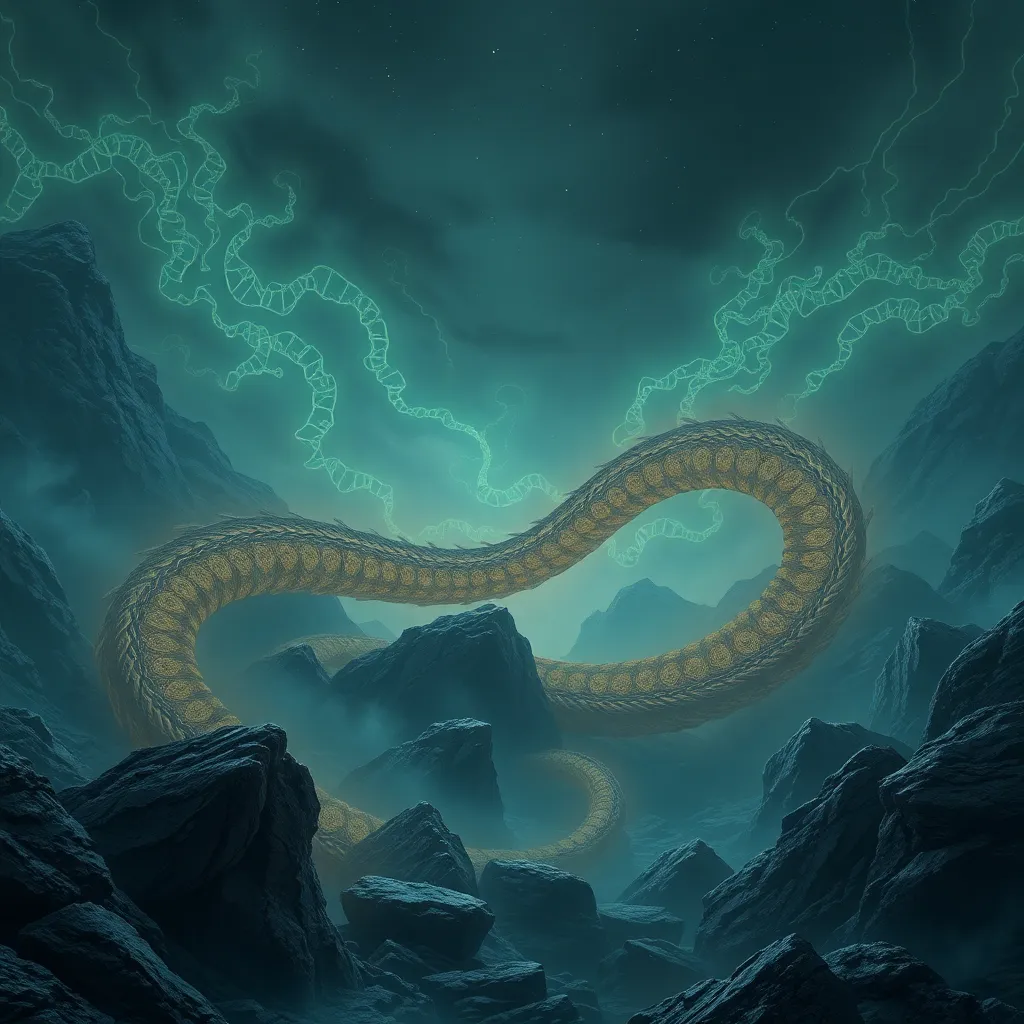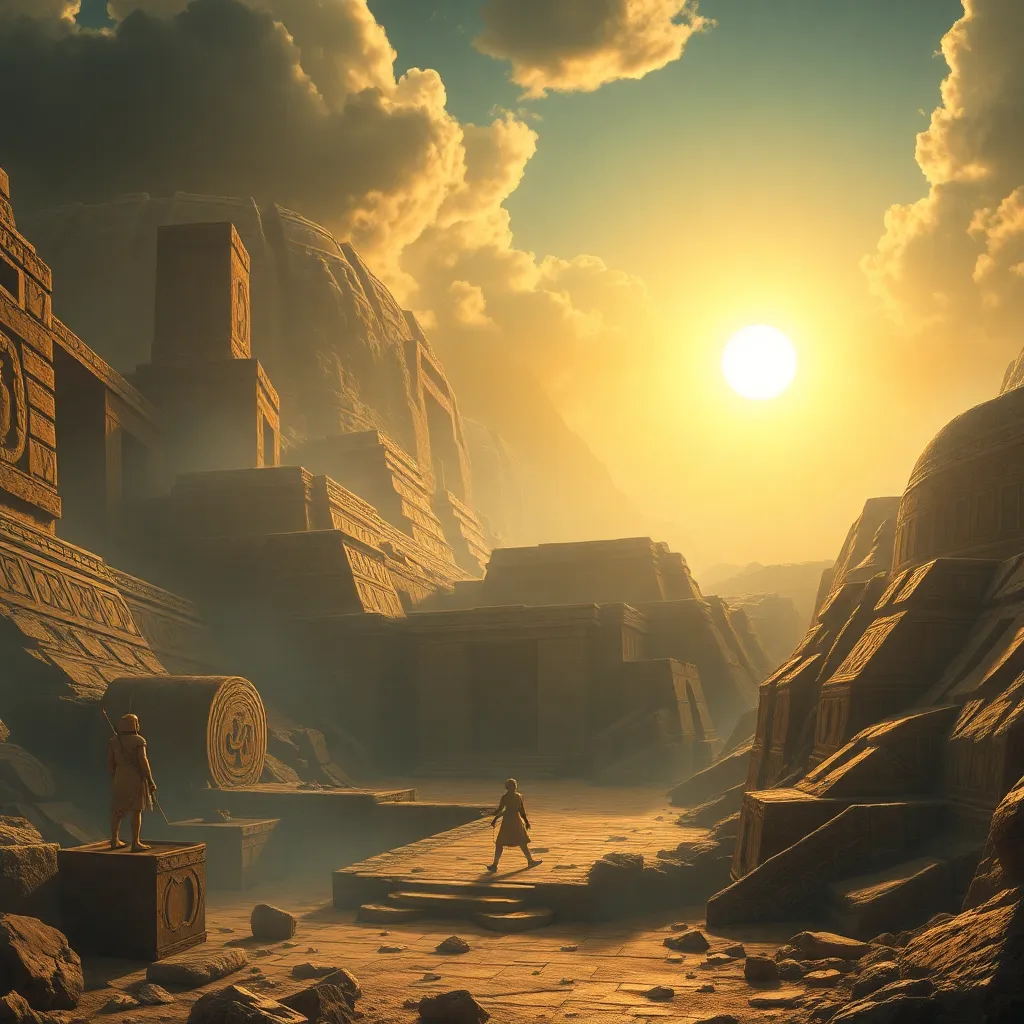Níðhöggr and the Celtic Underworld: A Serpent’s Domain
I. Introduction
Níðhöggr, a fearsome dragon in Norse mythology, serves as a symbol of chaos and destruction, lurking at the roots of Yggdrasil, the World Tree. In contrast, the Celtic Underworld encompasses various realms such as Annwn and Mag Mell, representing a complex afterlife filled with enchantment and mystery. This article aims to delve into the connections between Níðhöggr and the Celtic Underworld, exploring the significance of serpents in both mythologies and their shared themes of death, rebirth, and transformation.
II. Níðhöggr: The Dragon of the Roots
A. Description and characteristics of Níðhöggr
Níðhöggr is depicted as a monstrous serpent or dragon, gnawing at the roots of Yggdrasil. He is often described with features that evoke dread, embodying the primal forces of nature and destruction. His presence at the roots of the World Tree symbolizes decay and the inevitable cycle of life and death.
B. Níðhöggr’s role in Norse cosmology
In Norse cosmology, Níðhöggr plays a crucial role in the maintenance of balance between creation and destruction. He is associated with Hel, the realm of the dead, where he consumes the corpses of the deceased, further emphasizing his connection to death and the underworld. His actions remind us of the transient nature of life and the importance of accepting mortality.
C. Symbolism of the serpent in various mythologies
The serpent has been a potent symbol in many cultures, often representing:
- Wisdom and knowledge
- Chaos and destruction
- Transformation and rebirth
In this context, Níðhöggr embodies the duality of the serpent as both a harbinger of death and a necessary force for renewal.
III. The Celtic Underworld: A Realm of Shadows
A. Overview of the Celtic Underworld concepts (e.g., Annwn, Mag Mell)
The Celtic Underworld is rich with diverse beliefs and realms, including Annwn, a land of eternal youth, and Mag Mell, often portrayed as a paradise filled with feasting and joy. These realms offer a stark contrast to the grim associations of death found in other cultures, emphasizing a more nuanced understanding of the afterlife.
B. Key figures and deities associated with the Celtic Underworld
Several important figures are associated with the Celtic Underworld, including:
- Arawn: The king of Annwn, known for his hunting prowess and interactions with the living.
- Bran the Blessed: A hero whose journey to the Otherworld illustrates the connection between life and death.
- Fand: A goddess associated with the sea and the Otherworld, embodying beauty and mystery.
C. The significance of serpents in Celtic mythology
Serpents in Celtic mythology often symbolize:
- Wisdom and knowledge
- Protection and healing
- Transformation and renewal
These associations highlight the complex nature of serpents in relation to the cycle of life and death.
IV. Comparative Analysis: Níðhöggr and Celtic Serpents
A. Similarities between Níðhöggr and Celtic serpent figures
Both Níðhöggr and Celtic serpents embody the themes of death and transformation. They serve as guardians of the realms of the dead, illustrating the importance of acknowledging mortality.
B. Differences in representation and symbolism
While Níðhöggr is primarily associated with destruction and decay, Celtic serpents often represent healing and protection. This divergence reflects the differing cultural attitudes toward death and the afterlife:
- Níðhöggr’s consumption of the dead contrasts with the Celtic view of a nurturing afterlife.
- Celtic serpents are often seen as guides or protectors in the transition between life and death.
C. The role of serpents in creation myths and underworld narratives
In both mythologies, serpents play pivotal roles in creation myths. Níðhöggr’s actions ensure the cycle of life continues, while Celtic serpents often symbolize the interconnectedness of all life forms.
V. Themes of Death and Rebirth
A. Níðhöggr’s role in the cycle of life and death
Níðhöggr is integral to the Norse understanding of life’s cyclical nature. His actions prompt the decay necessary for new growth, illustrating the concept that death is not an end but a precursor to rebirth.
B. Celtic beliefs regarding death and the afterlife
Celtic traditions often view death as a passage to another existence rather than a finality. The underworld is a place of transformation, where the soul continues to exist in various forms.
C. The importance of transformation and renewal in both mythologies
Both Níðhöggr and Celtic serpent figures emphasize the necessity of transformation. They illustrate that through decay and death, new life emerges, reinforcing the idea that endings are merely beginnings in disguise.
VI. Cultural Interpretations and Artistic Representations
A. How Níðhöggr is depicted in literature and art
Níðhöggr has been portrayed in numerous forms of literature and art, often depicted as a fearsome creature lurking in the shadows. His character serves as a symbol of chaos, often featured in Norse sagas and poems.
B. Representations of the Celtic Underworld in folklore and modern media
The Celtic Underworld has inspired countless stories and artistic interpretations, from ancient tales to modern fantasy literature. Films, television shows, and books often draw upon the themes of the Otherworld, creating a rich tapestry of narratives that explore the complexities of life and death.
C. The impact of these mythological figures on contemporary culture
The enduring legacy of Níðhöggr and Celtic serpents continues to influence contemporary spirituality and artistic expression, highlighting their relevance in modern contexts.
VII. The Influence of Níðhöggr and Celtic Serpents on Modern Spirituality
A. Their relevance in modern pagan practices and beliefs
Both Níðhöggr and Celtic serpents have found a place in modern pagan practices, where they are often invoked as symbols of transformation and renewal, representing the cyclical nature of life.
B. Exploration of serpent symbolism in contemporary spiritual movements
Serpent symbolism remains prevalent in various spiritual movements, embodying themes of wisdom, healing, and the interconnectedness of all life.
C. The merging of Norse and Celtic traditions in modern contexts
As interest in ancient mythologies grows, the blending of Norse and Celtic traditions offers a unique perspective on the shared human experience of life, death, and rebirth.
VIII. Conclusion
In summary, Níðhöggr and the Celtic Underworld represent rich mythological landscapes that illustrate humanity’s enduring fascination with death, transformation, and renewal. Both figures, though distinct in their cultural contexts, share common themes that resonate across time and space. Their legacy encourages us to explore the connections between mythologies, inviting further inquiry into the mysteries of existence.



